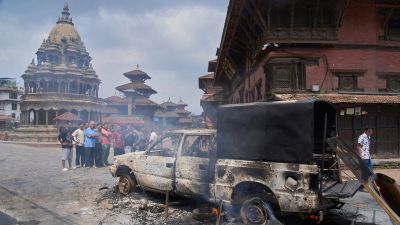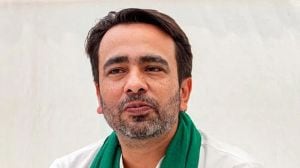1947 A Cricketing Story
In an unrelated development, Merchant, Ali and Rusi Modi withdrew from the squad. A groin strain kept Merchant out, Ali’s elder bro...

IT seemed business as usual around July 1947 when national selectors—CK Nayudu, DB Deodhar, Dr Jahangir Khan and PE Palia—picked the Indian squad for the tour to Australia in October.
Expectedly, Vijay Merchant was named the captain and Mushtaq Ali the deputy, of the squad which was picked three months ahead of the tour. The long gap between the selection and the tour enabled the players, mostly amateurs, to apply for leave to their respective employers and also plan for the long voyage.
But from the arm of fate came a topspinner. Cricket historian Mihir Bose chronicles the incidents in The History of Indian Cricket: ‘‘(Ashley) D’Mello, now president of the Board, spoke of the team selection displaying the whole map of India, a remark which was meant to counter the familiar criticism of regional bias. But on 15th August, the map itself had been redrawn. Half of Punjab, the half that had produced some of the great bowlers like Nissar, was now gone and Fazal Mahmood, who had been selected for the tour withdrew. Overnight, an Indian cricketer had become a foreign national.’’
Needless to say, the squad that would now take on Donald Bradman’s ’Invincibles’, it appeared, would only serve to enhance the latter’s reputation.
Lala Amarnath was anointed captain of a squad which comprised a fingerprint expert (Chandu Sarwate), an expert tiger hunter (Vijay Hazare), a police officer (C R Rangachari), a soldier (Hemu Adhikari) and a prince (M S Ranvirsinghji). And the team was managed by Pankaj Gupta, who was not only the BCCI secretary but also a Member of the British Empire.
The tour was a disaster because the Indians lost 0-4, pitted against the might of batsmen like Bradman, Arthur Morris, Lindsay Hassett and pacers such as Raymond Lindwall and Keith Miller. In the first Test at Brisbane, the Indians even failed to cross the 100-run mark in both the innings. The first innings score of 58 remains the all-time lowest total for India against Australia.
That almost half of the Indian squad didn’t play a Test match thereafter was an indicator of its stop-gap nature. Two players—left-handed batsman Gul Mohammad and pacer Amir Elahi, 39, who was the oldest member—later migrated to Pakistan.
|
LEADING LIGHTS
|
|||||
| • Lala Amarnath An astute leader who backed his players to the hilt • Vijay Hazare A world-class batsman, this Roman Catholic, a captain in the Baroda state army, was also an expert tiger hunter • Vinoo Mankad Among the all-time best all-rounders, Mankad used to open the innings as well as bamboozle the opposition with his left-arm spinners |
|||||
But the leadership and fighting abilities of Amarnath (he topped the bowling averages with 13 wickets), the classy batsmanship of Hazare (a century in each innings at the Adelaide Test) and the all-round skills of Dattu Phadkar (he topped the batting averages) and Vinoo Mankad stood out. The tour was also to be remembered for Mankad becoming part of cricketing lexicon and Maharaj Shri Ranvirsinghji, cousin of the famed Duleepsinghji, being kept out of the Tests. It was alleged that since Amarnath didn’t see eye to eye with Duleepsinghji, who was on the tour as a reporter, he didn’t pick Ranvirsinghji in any of the five Tests. The Mankad run outs of Australian opener William Brown were dwelt upon well by Jack Fingleton, former Australian cricketer in the 1947-48 edition of Indian Cricket. ‘‘Twice he ran out Brown for leaving the crease before the ball was bowled and no odium attached to Mankad because he had given Brown frequent warnings that the latter was taking an advantage.’’ Such dismissals thereafter were categorised as being mankaded.
Summing up the tour, Fingleton says, ‘‘There is plenty of ability in Indian cricket, plenty of glamour and skill but a little lacking at times in the fundamentals. Defence is the first principle of batting and good fielding the first essence of attack.’’
Have the times changed? We leave the debate open.
Photos



- 01
- 02
- 03
- 04
- 05



























